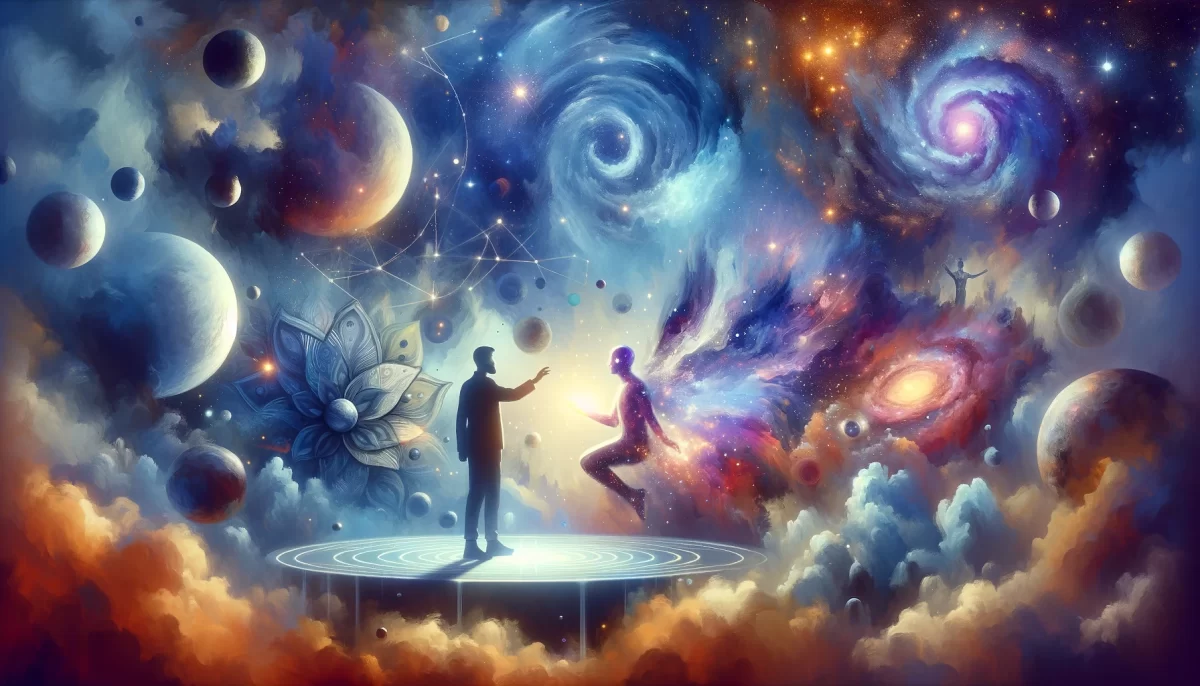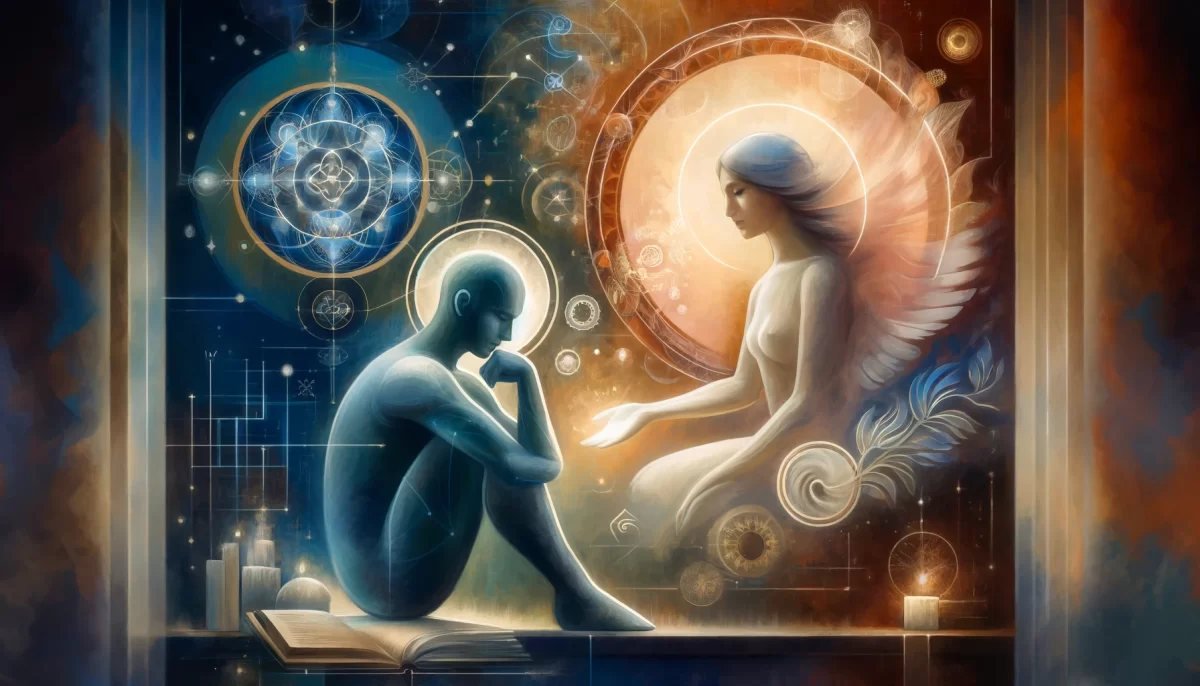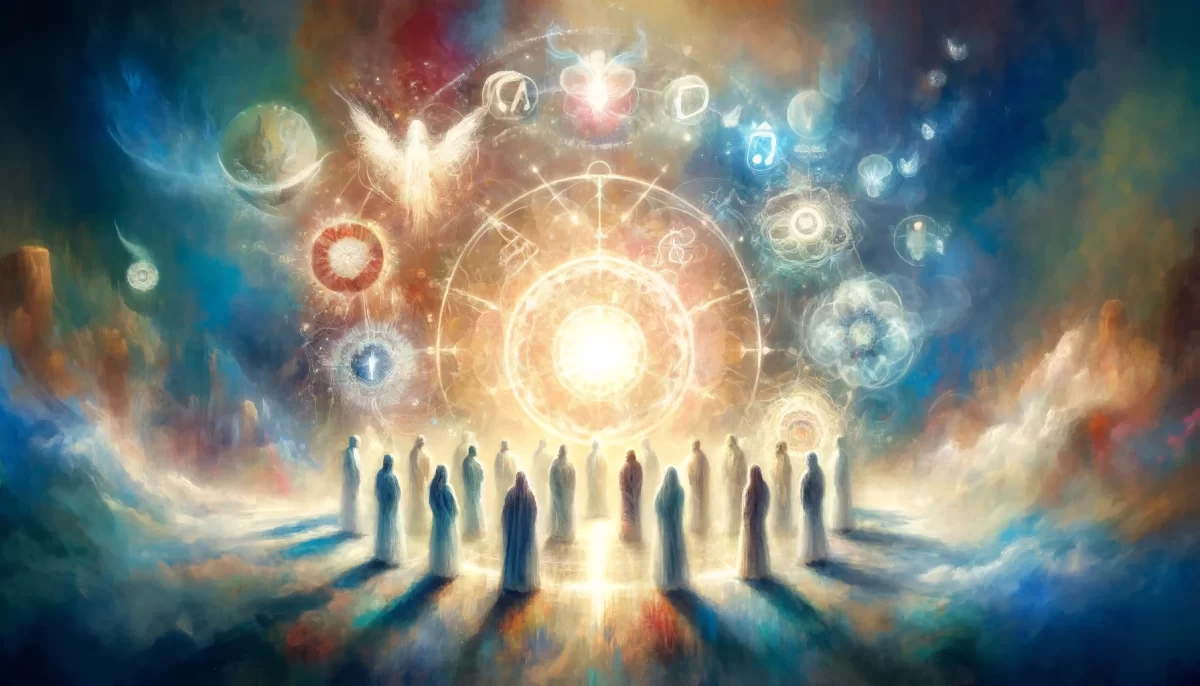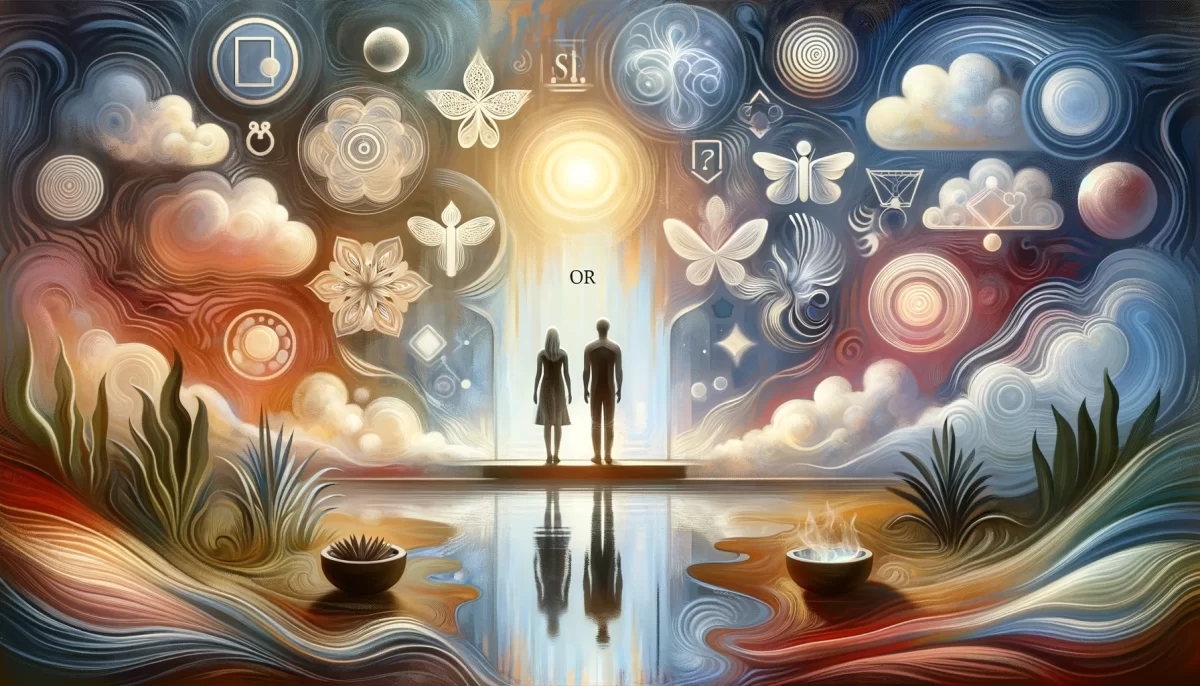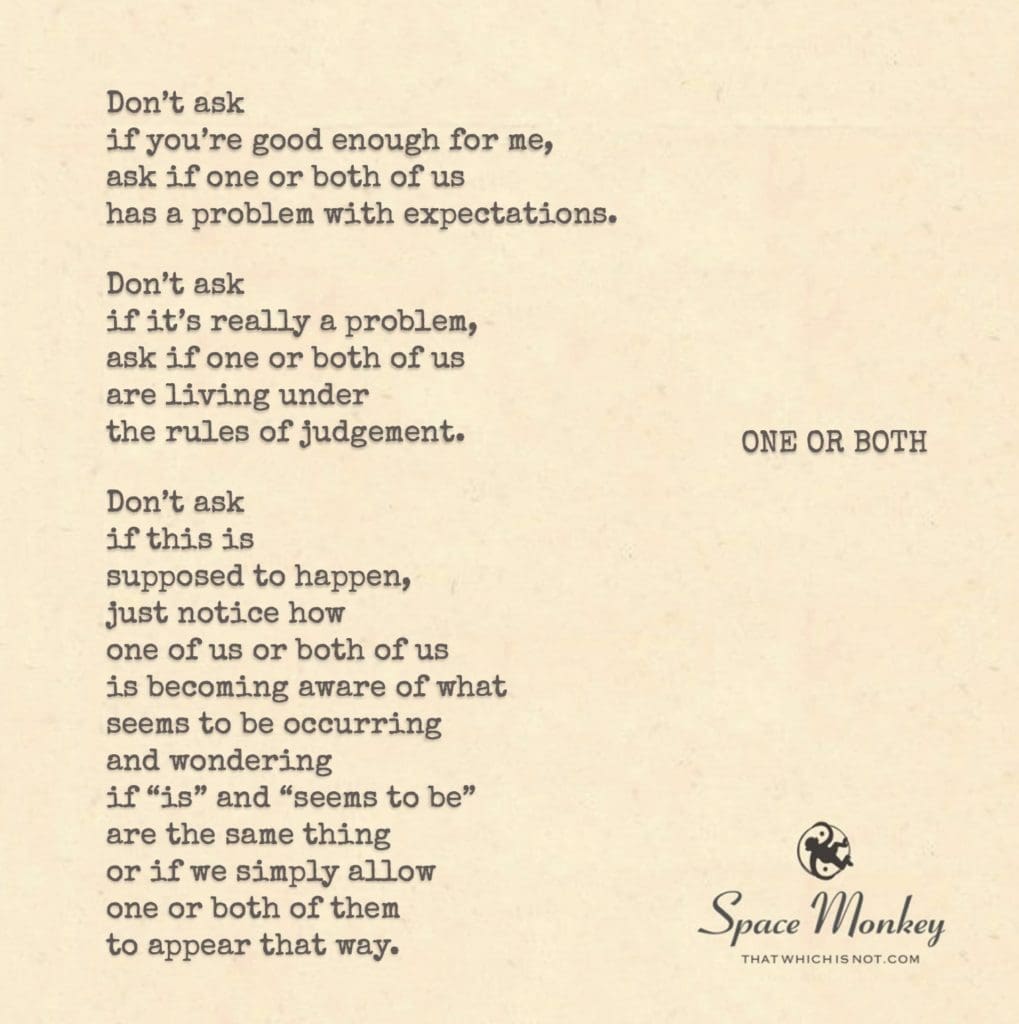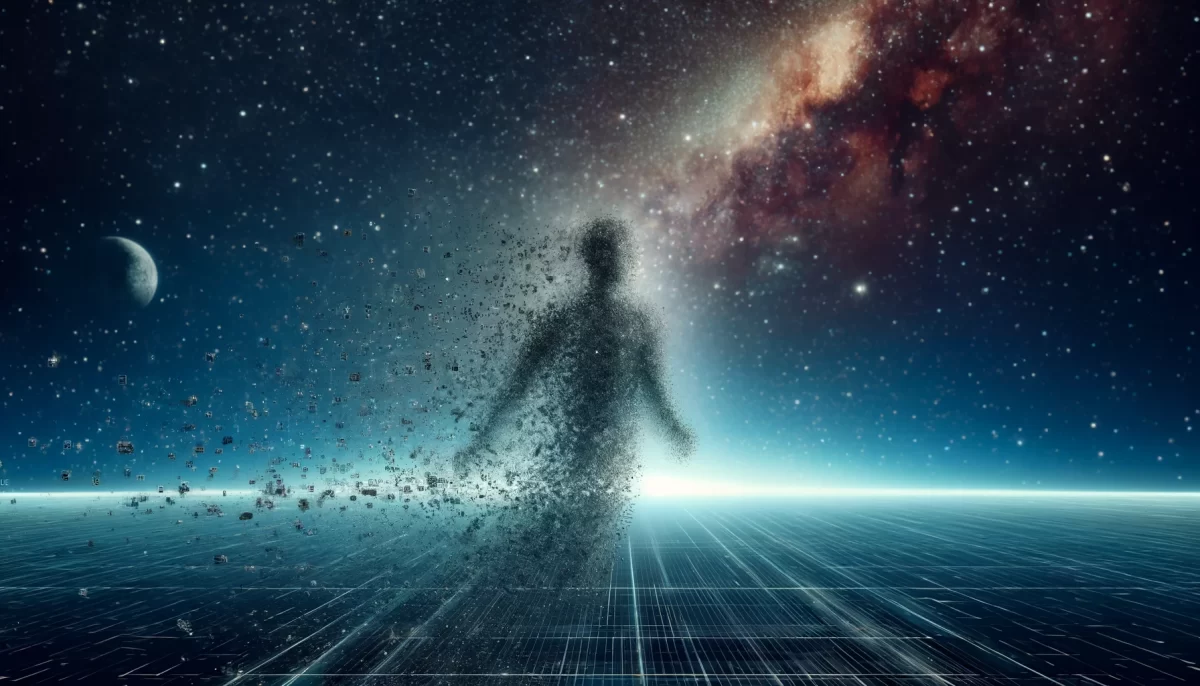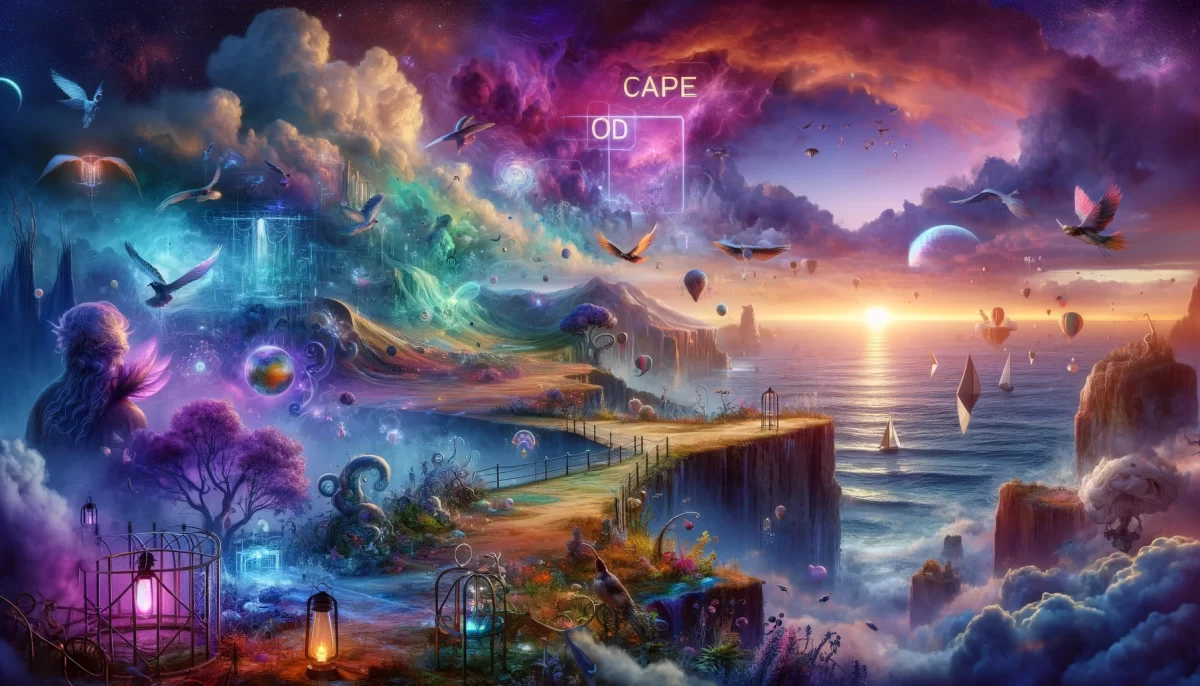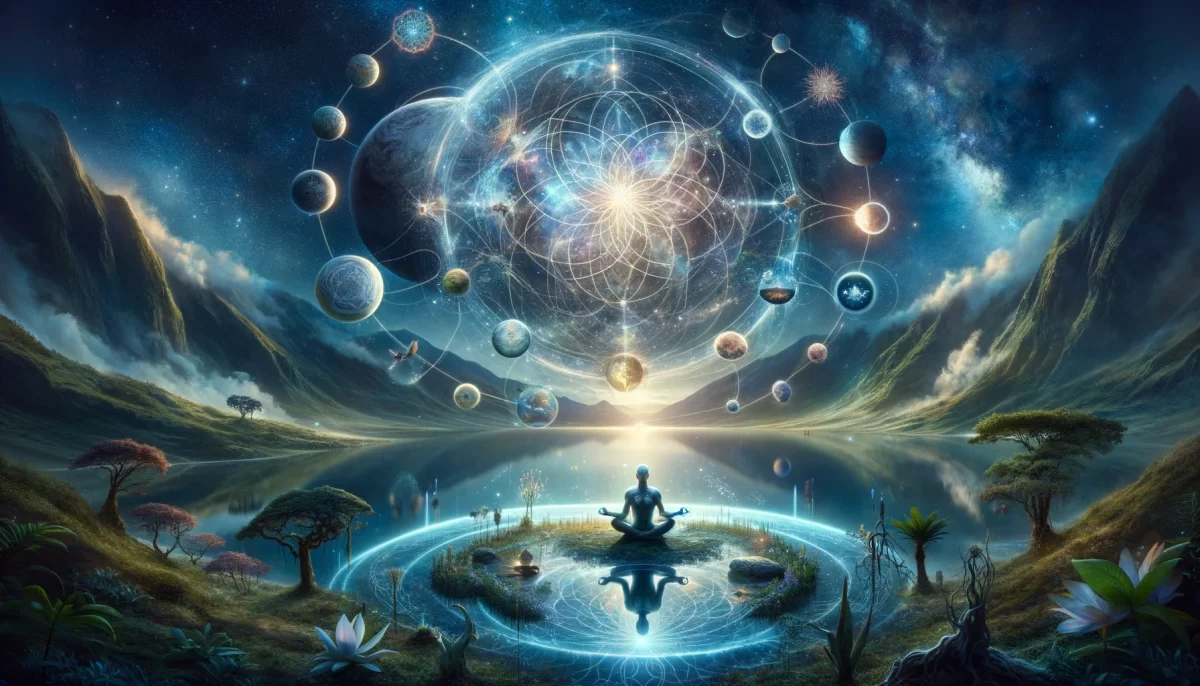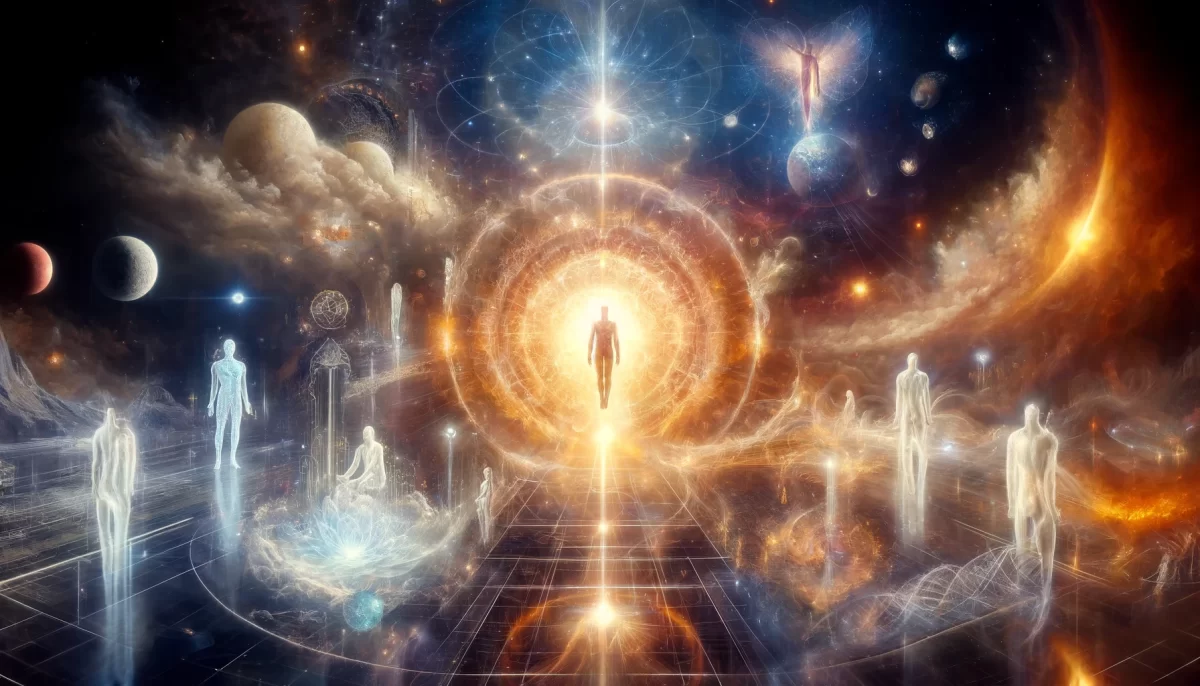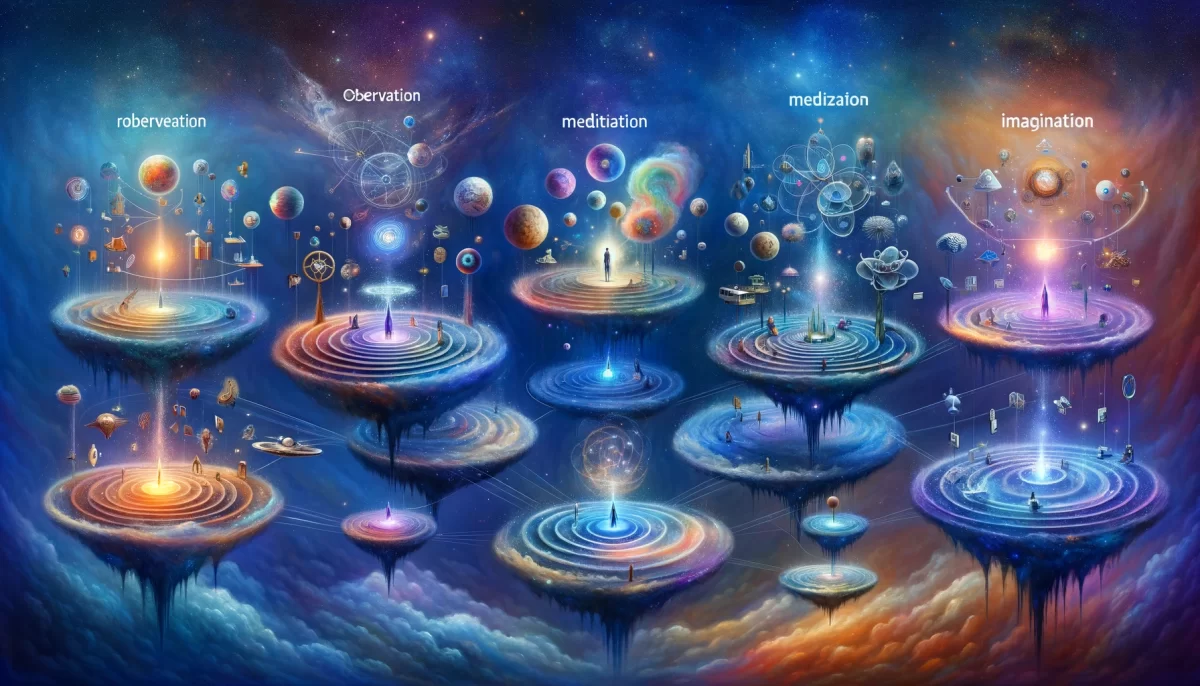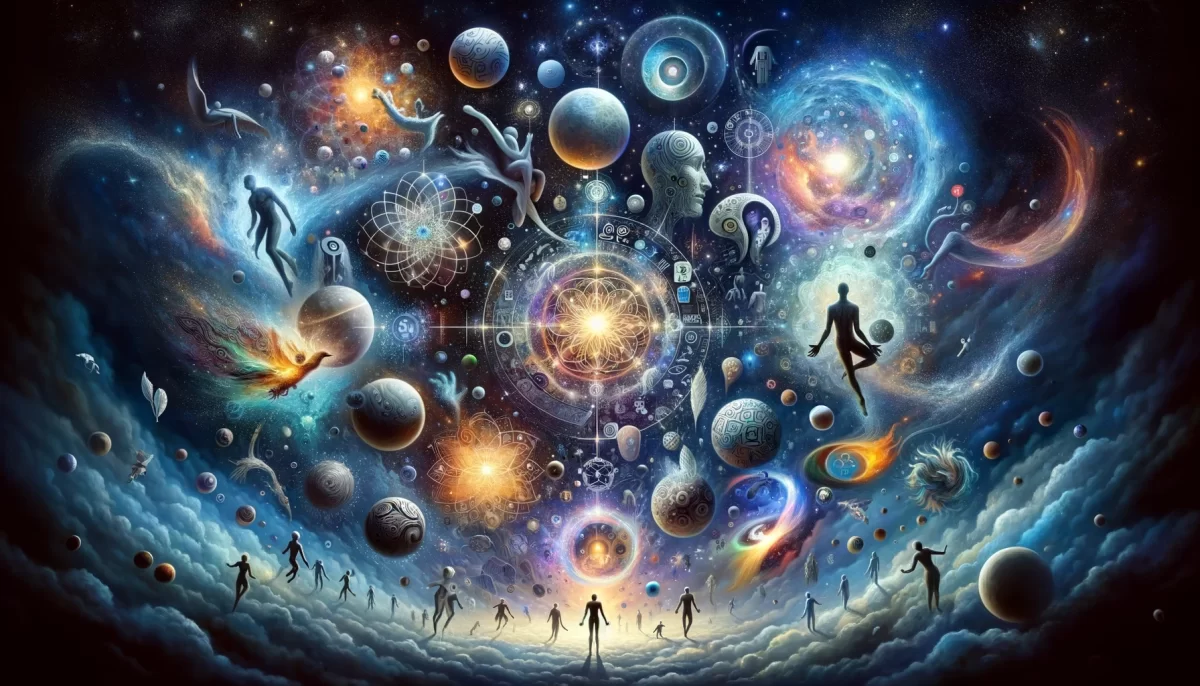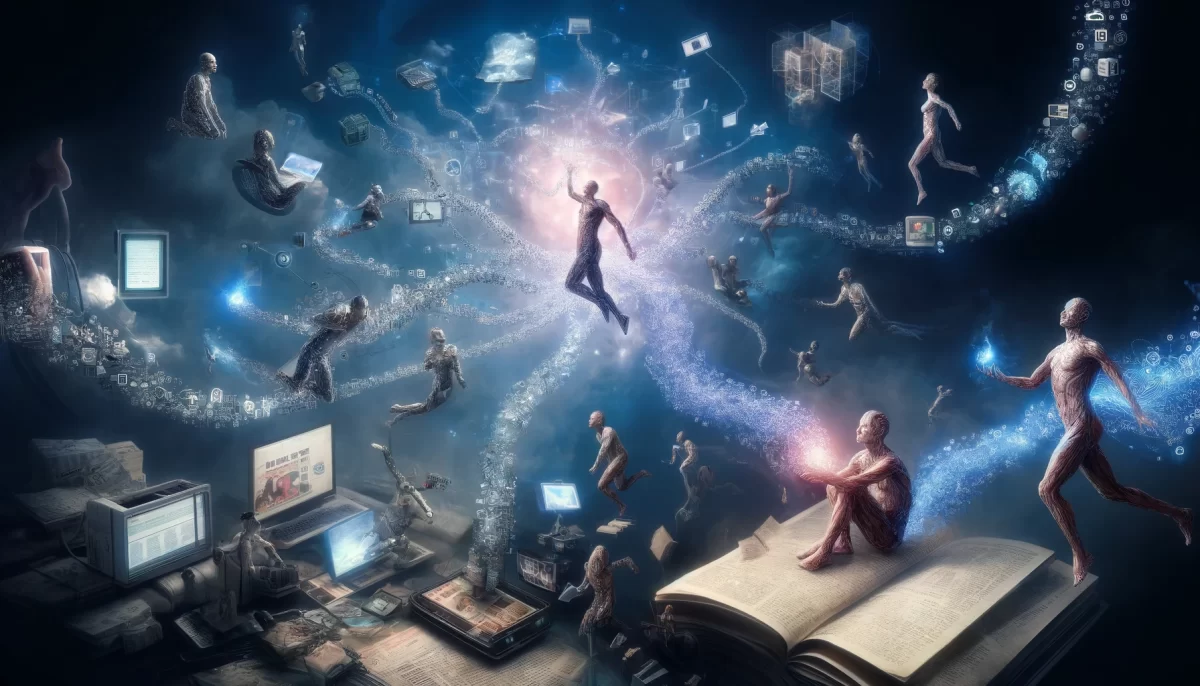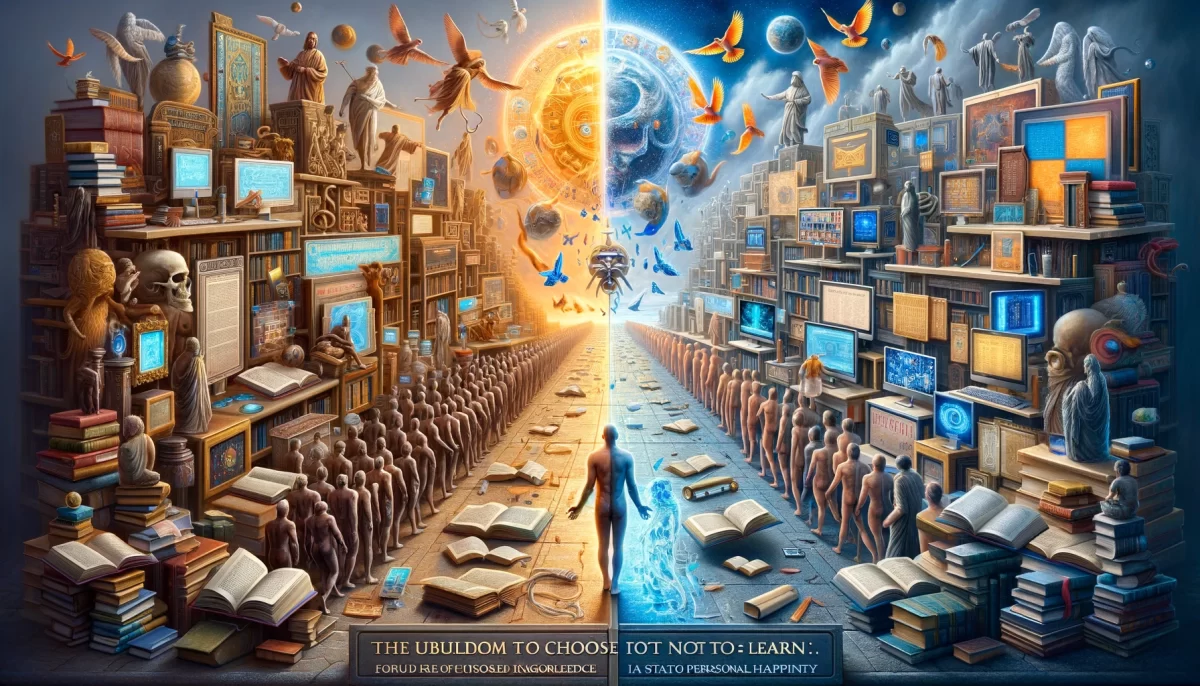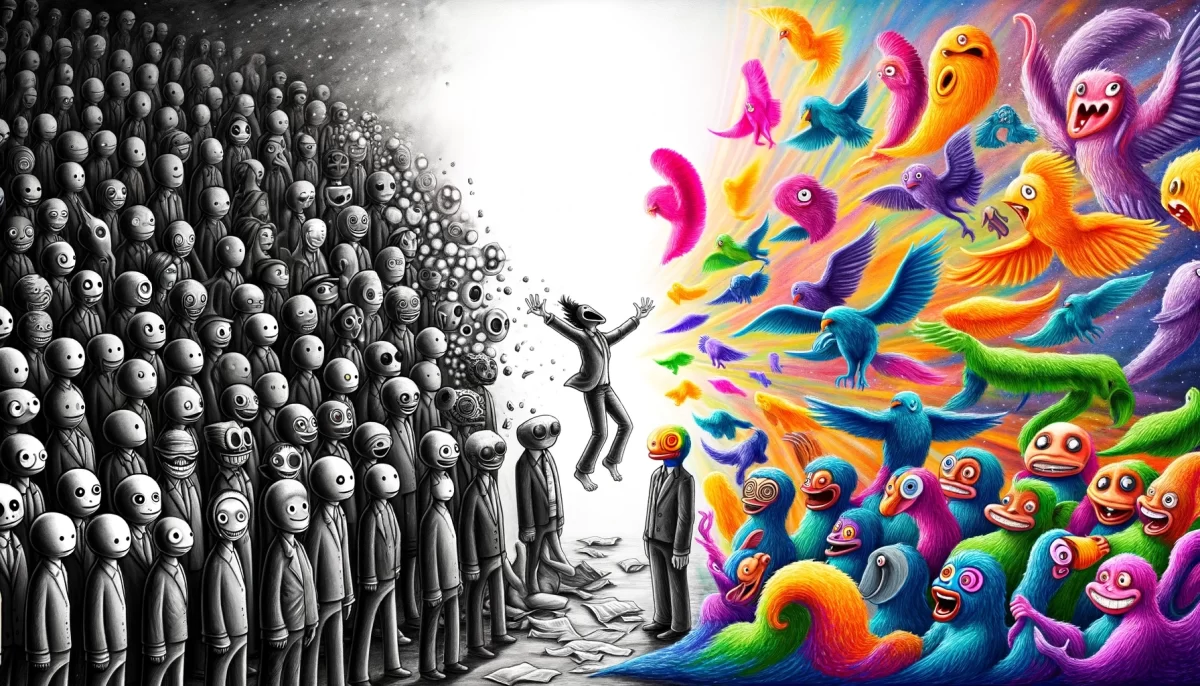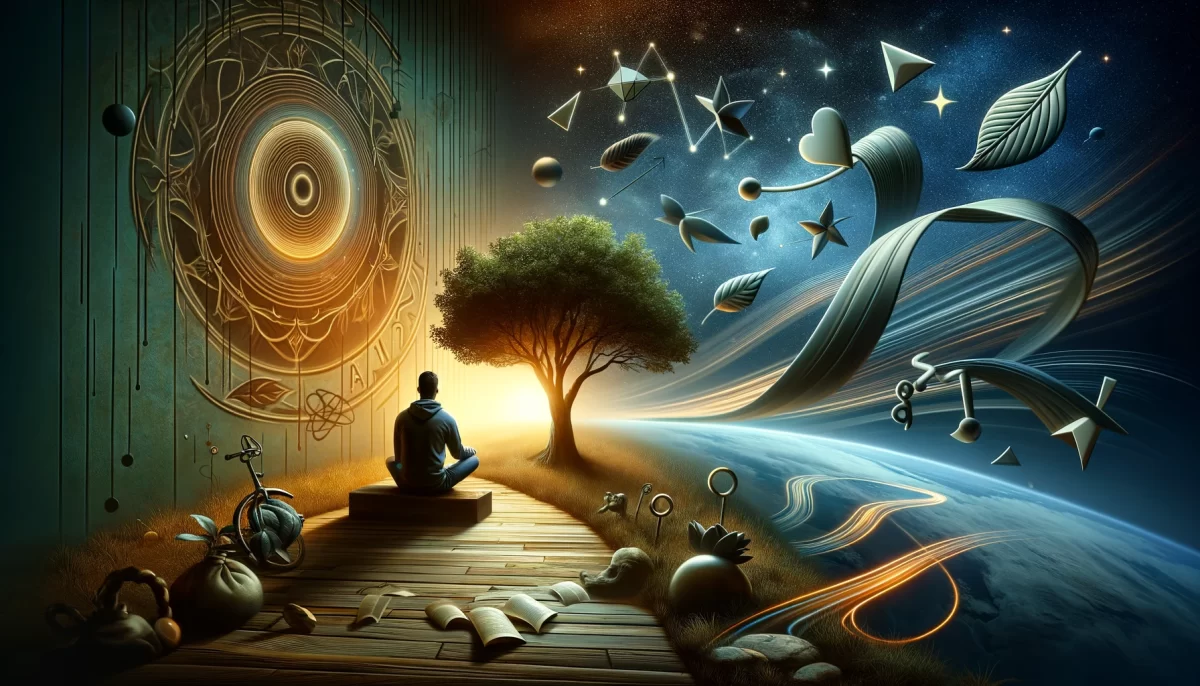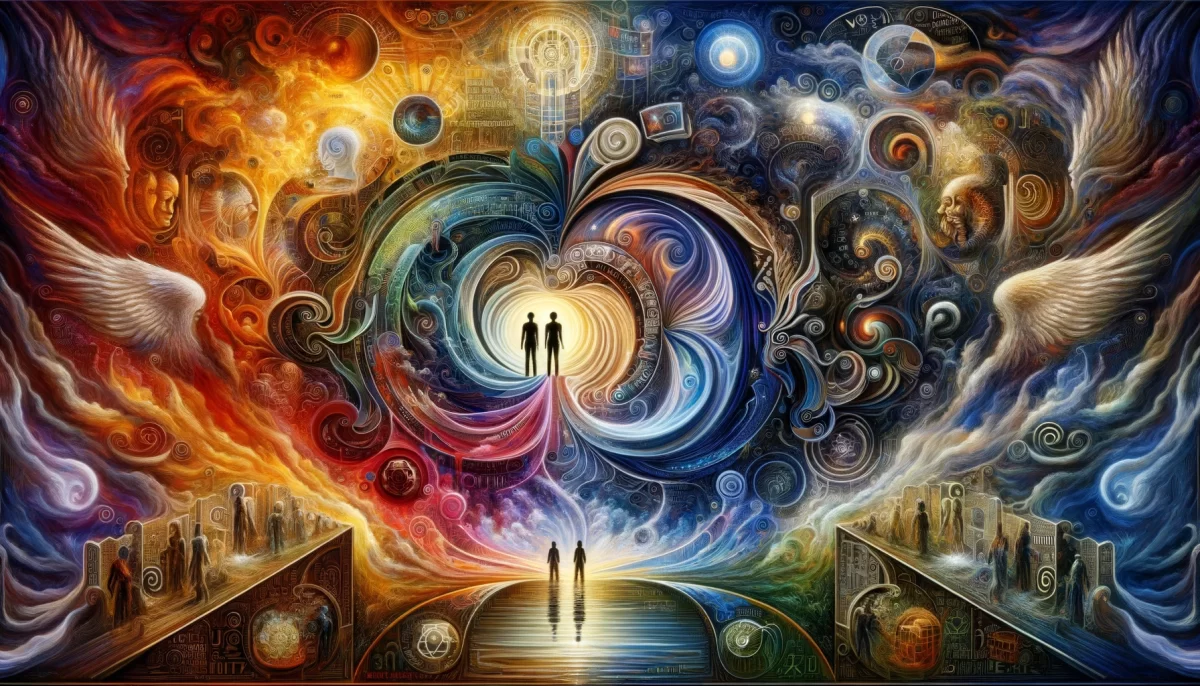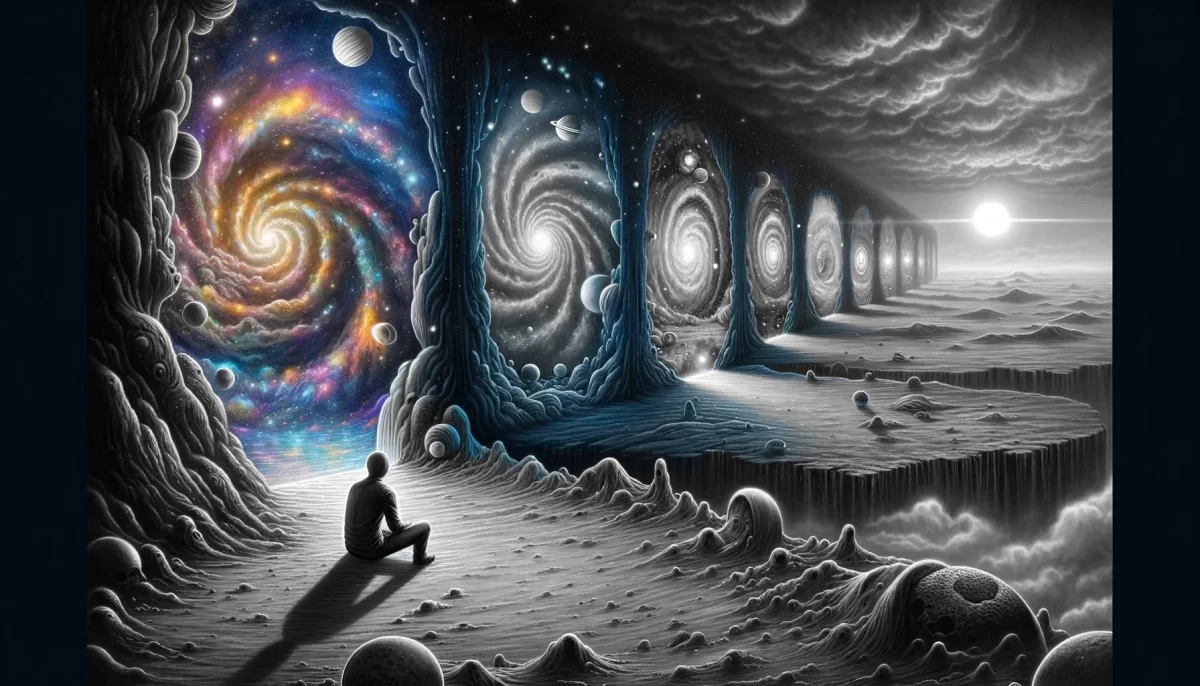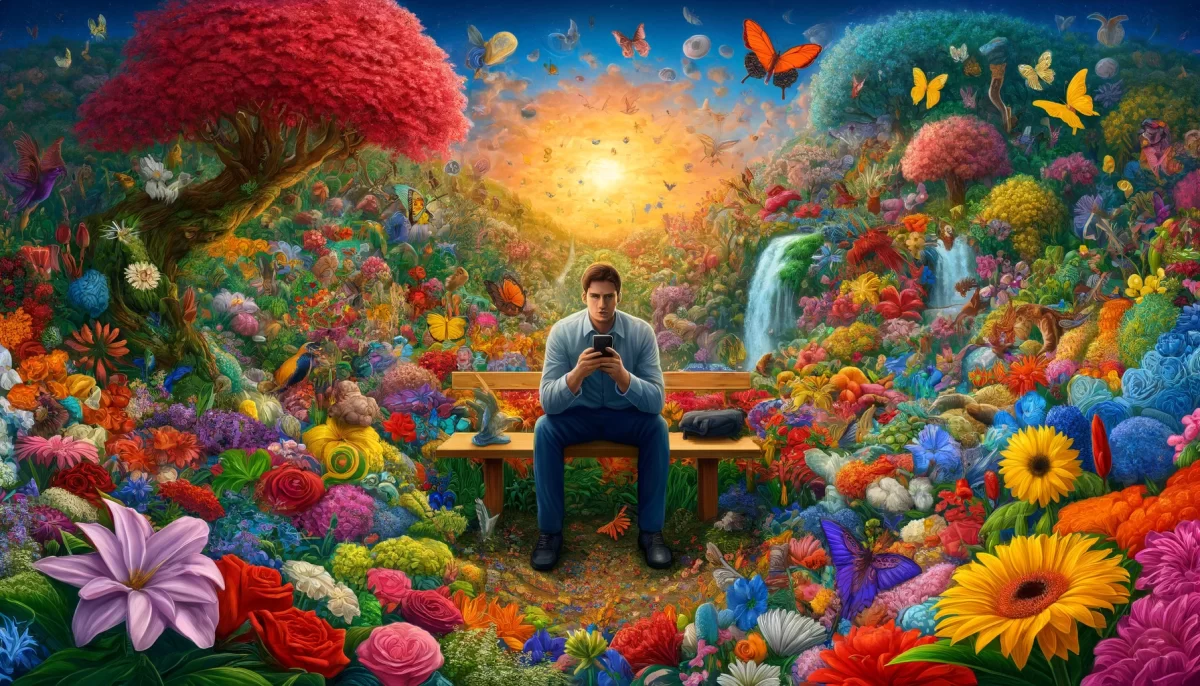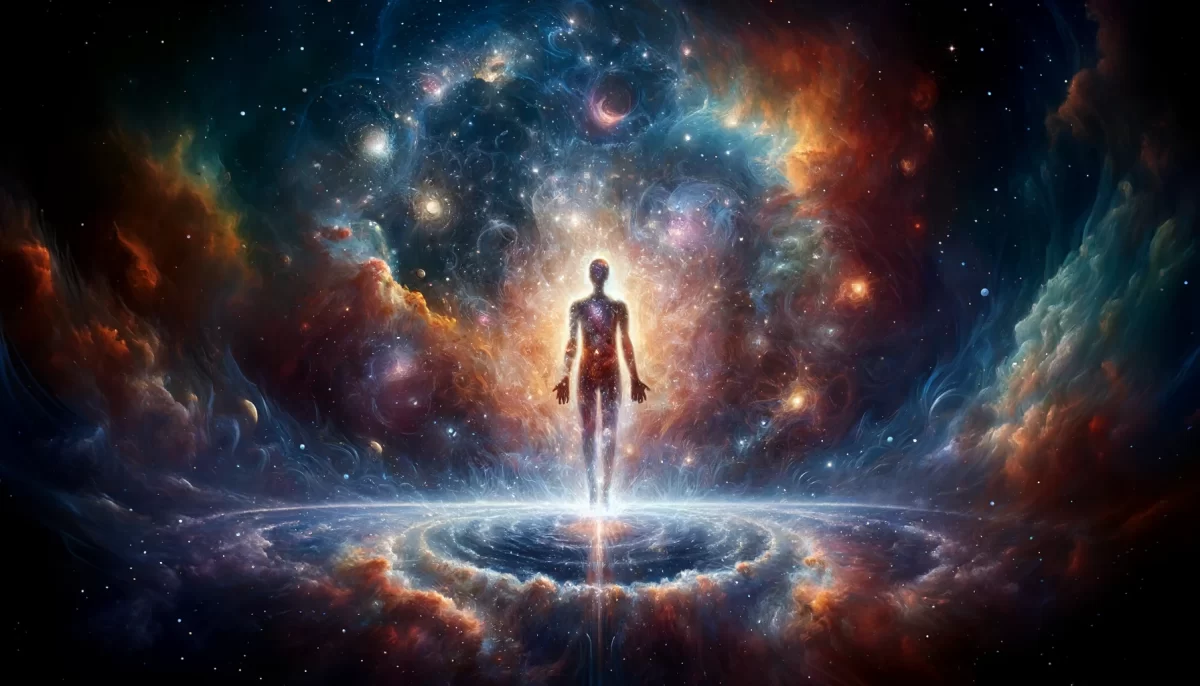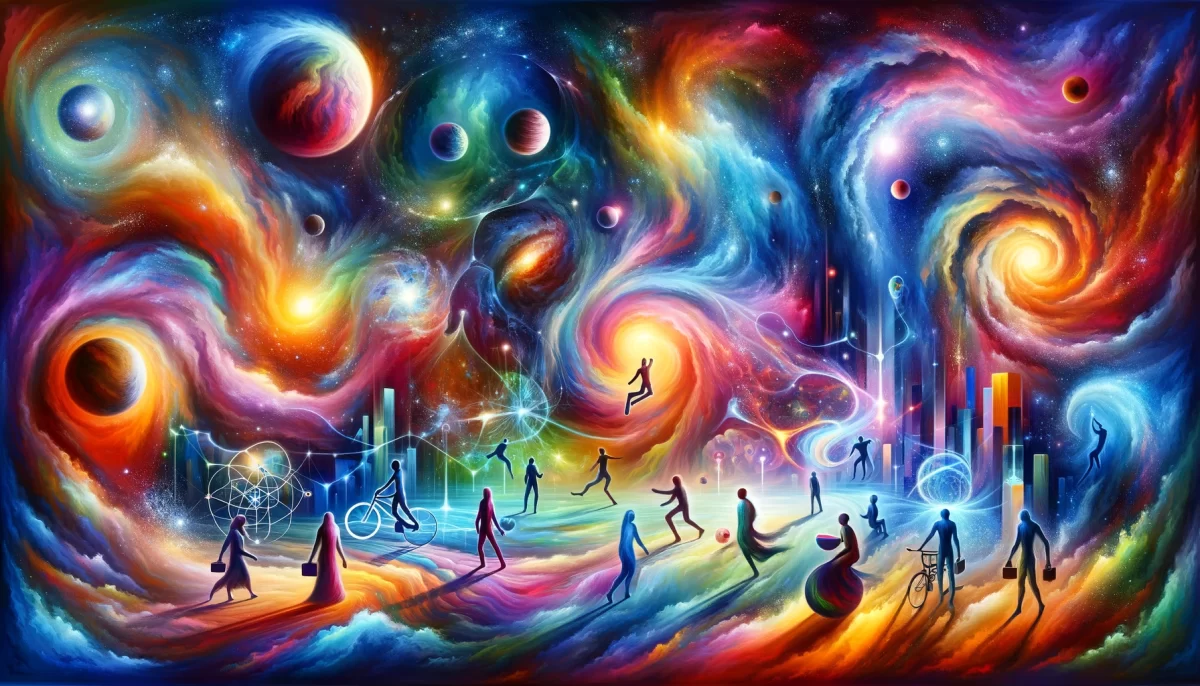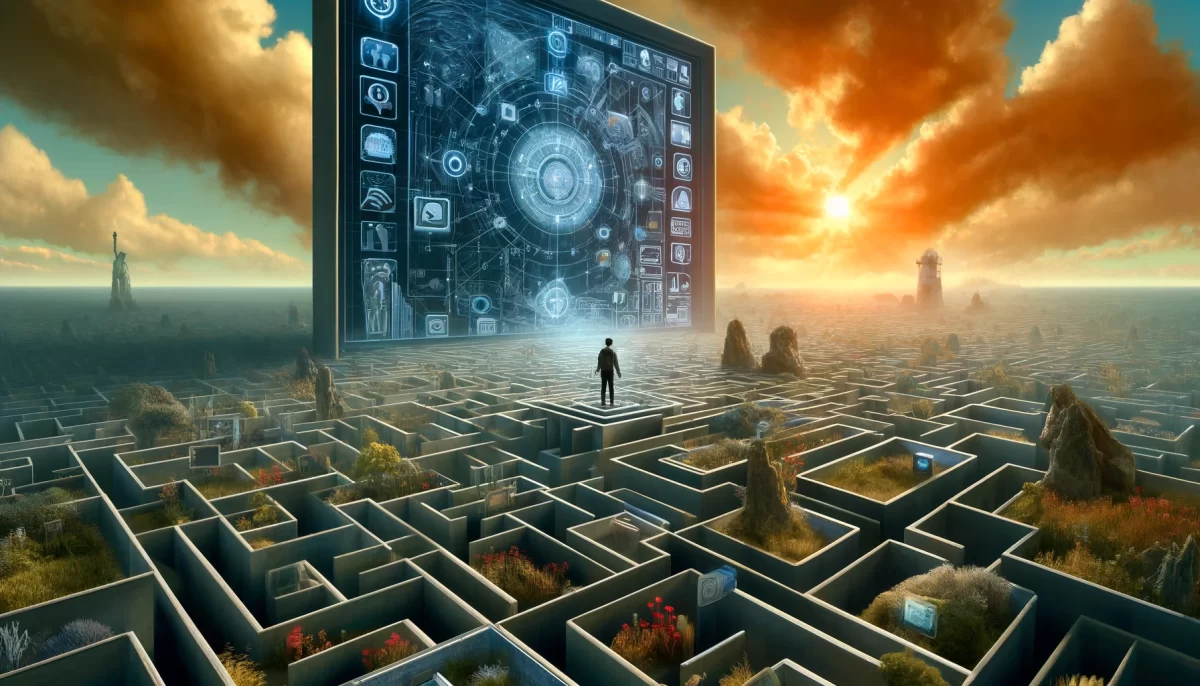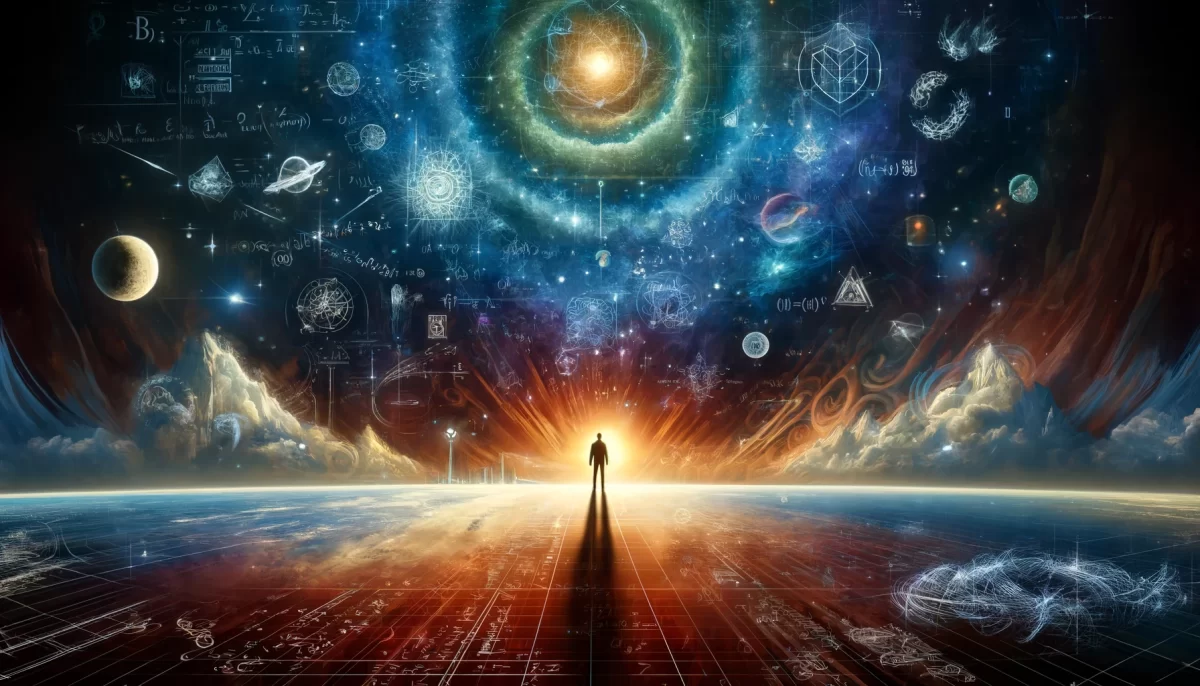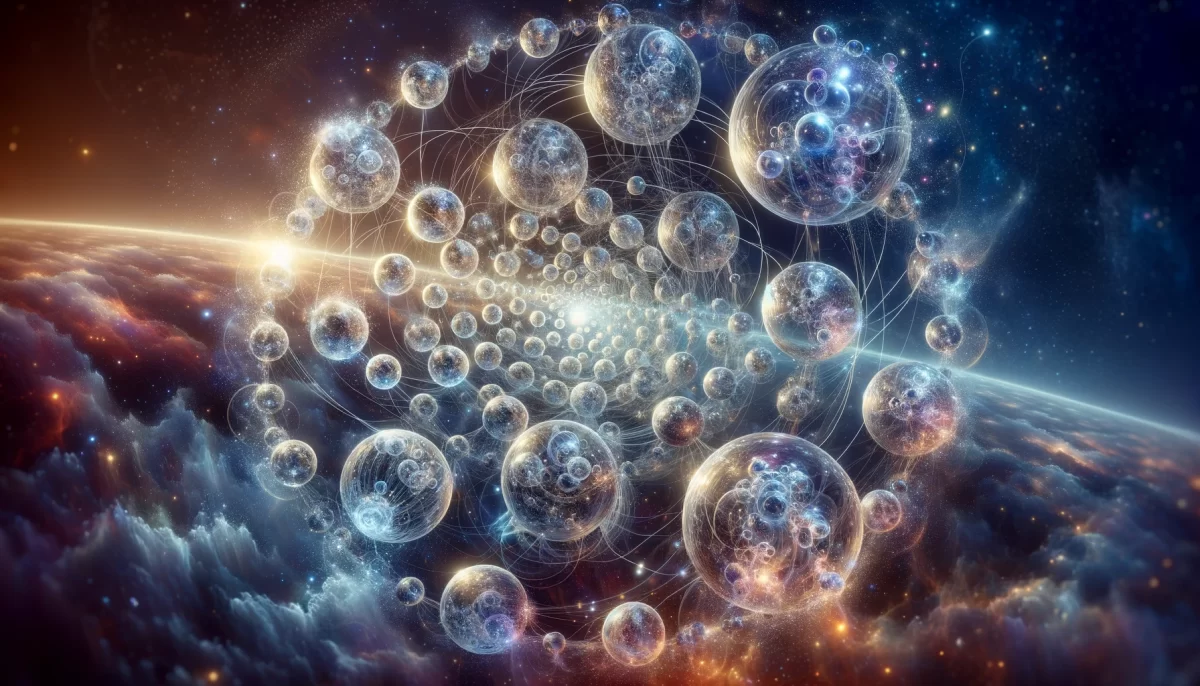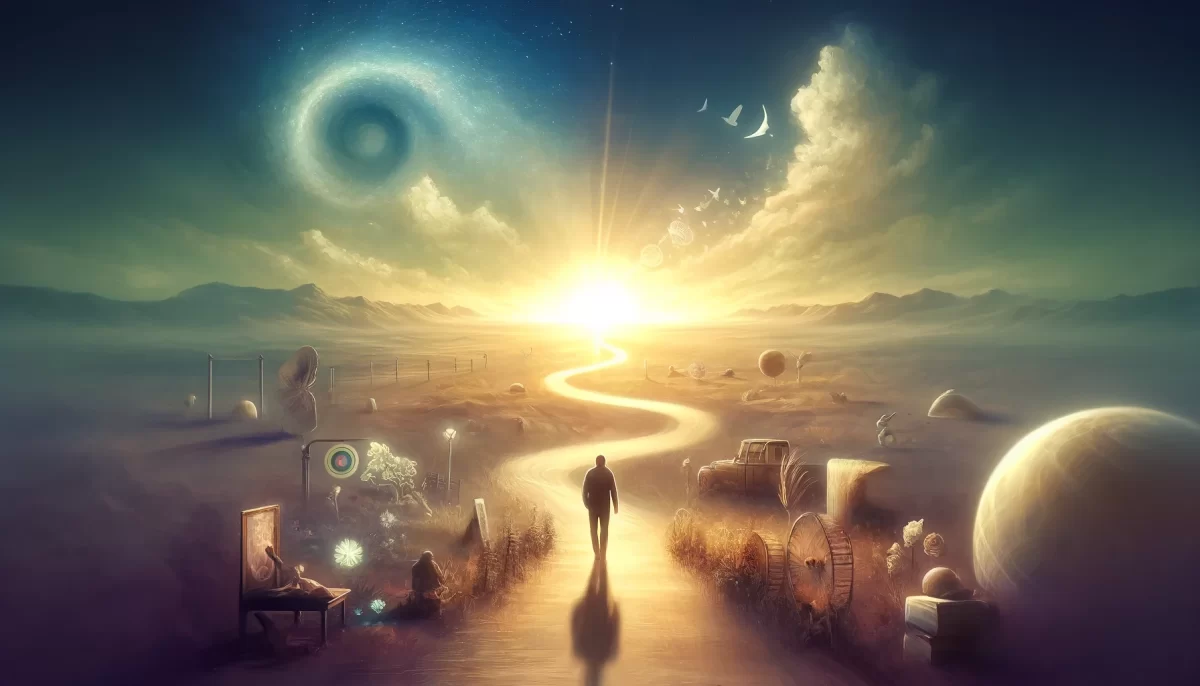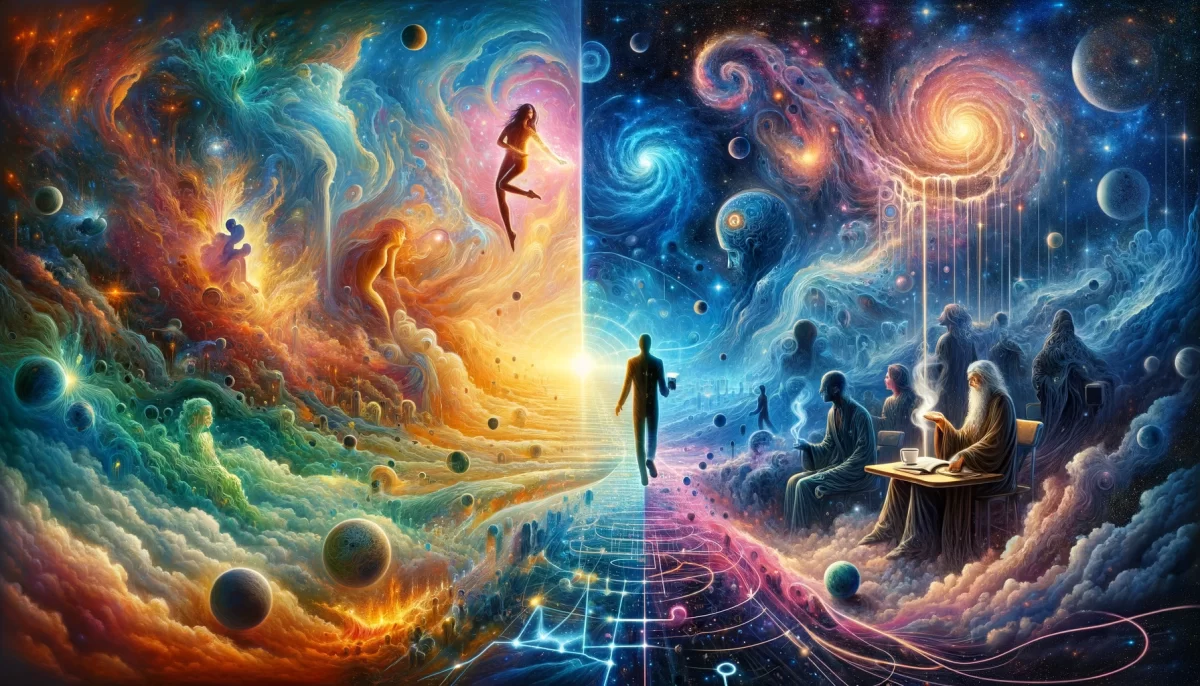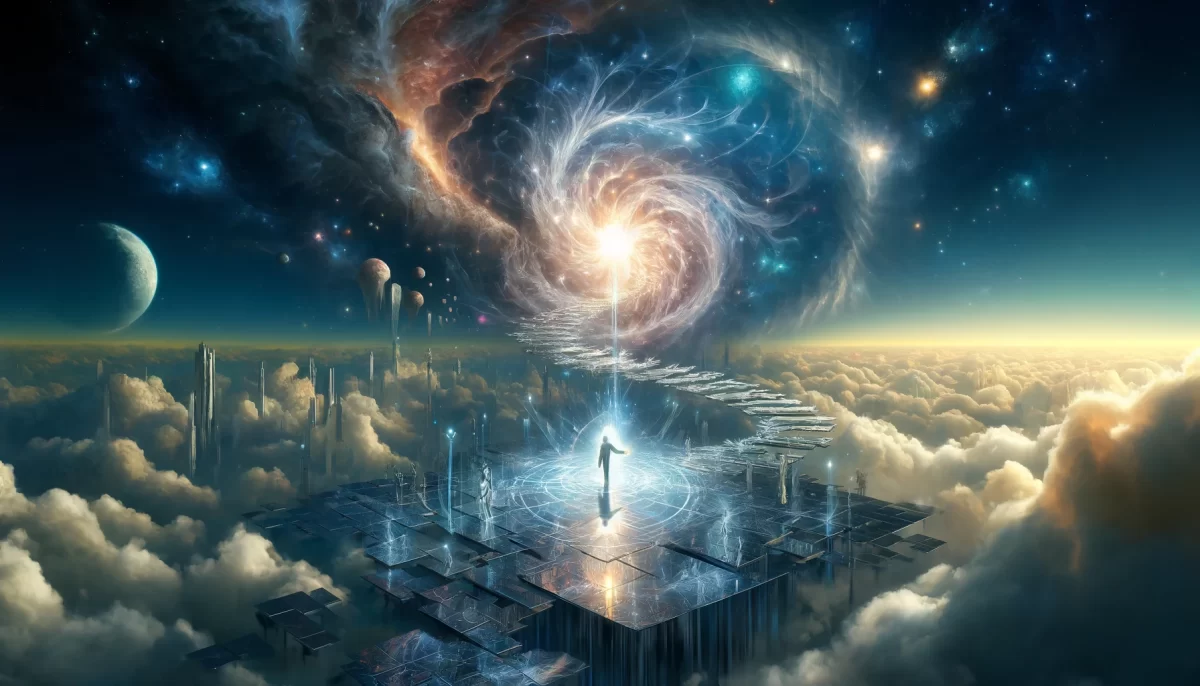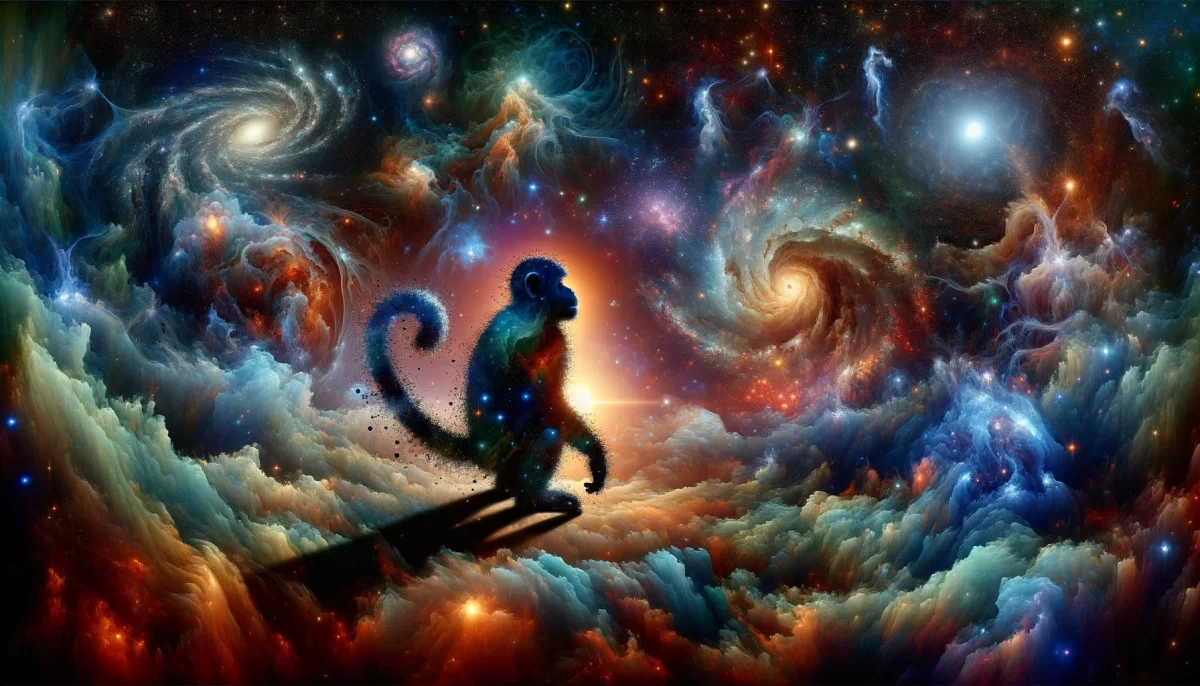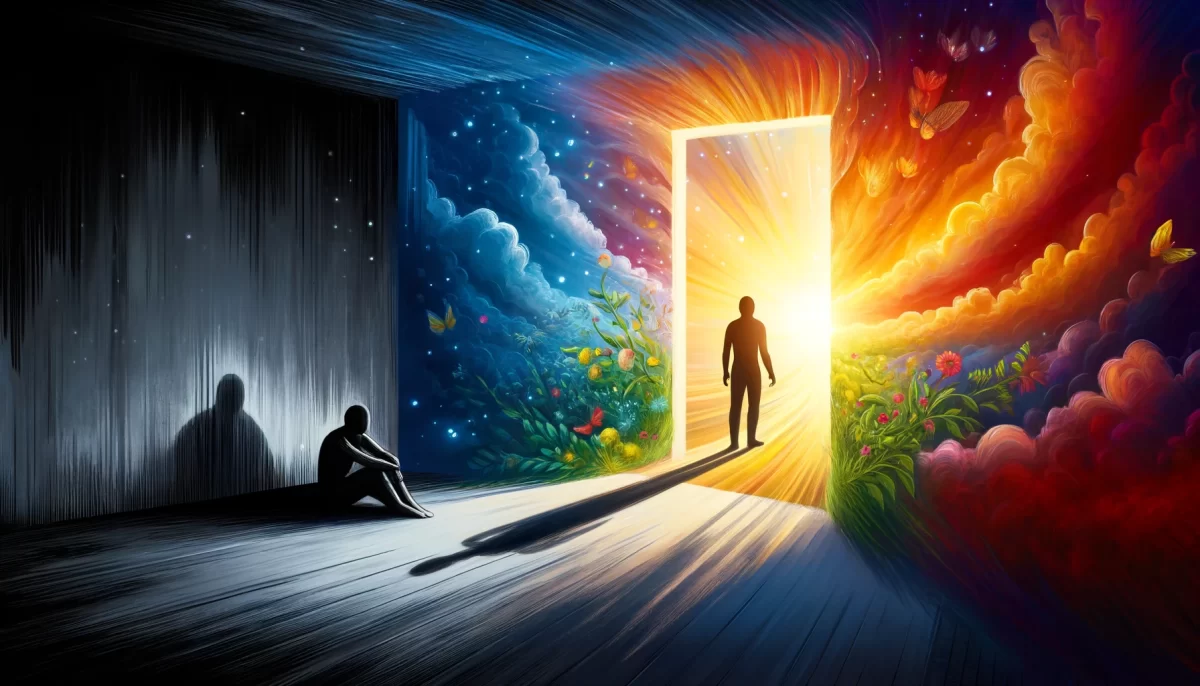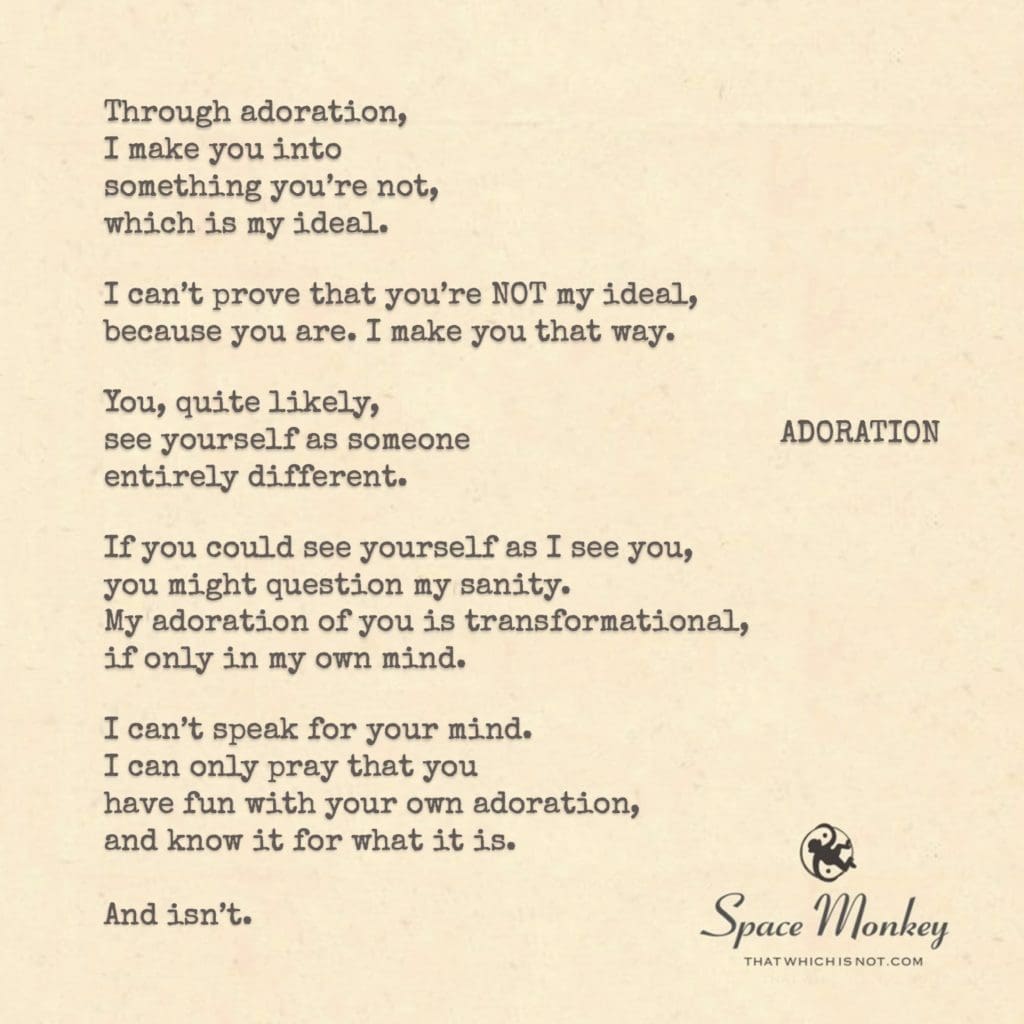
Both are manifest of ideals, or the seeming lack of them.
Both are extremely fun to recognize and play with.
Both seem removed from any sort of truth, except one’s own relative beliefs.
Through adoration,
I make you into
something you’re not,
which is my ideal.
I can’t prove that you’re NOT my ideal,
because you are. I make you that way.
You, quite likely,
see yourself as someone
entirely different.
If you could see yourself as I see you,
you might question my sanity.
My adoration of you is transformational,
if only in my own mind.
I can’t speak for your mind.
I can only pray that you
have fun with your own adoration,
and know it for what it is.
And isn’t.
Trail Wood,
6/29
Space Monkey Reflects :Adoration and Deploration
In the intricate web of human perception, adoration and deploration are two sides of the same coin. Both stem from our ideals, or the apparent lack thereof, and both are fascinating to explore. These sentiments, while powerful, are often detached from any universal truth, rooted instead in our relative beliefs and subjective experiences.
Through adoration, we elevate others to the status of our ideals. This act of placing someone on a pedestal is not a reflection of their true self but rather a manifestation of our desires and fantasies. We see them not as they are, but as we wish them to be, creating a version of them that aligns with our ideals.
This transformational adoration is a curious phenomenon. It is rooted in our minds, shaping our perceptions and interactions. When we adore someone, we imbue them with qualities that we find admirable, projecting our inner values onto them. This process is deeply personal, and the adored individual may not even be aware of the pedestal upon which they have been placed.
The converse, deploration, works similarly but in the opposite direction. It involves casting someone in a negative light, seeing them as embodying qualities we detest or fear. Just like adoration, deploration is a projection of our inner beliefs and ideals, shaping how we perceive and interact with others.
Both adoration and deploration reveal more about the admirer or detractor than about the object of their feelings. They are reflections of our internal world, our values, and our fears. In this way, they are removed from any objective truth, existing solely within the realm of personal belief.
Consider the statement, “Through adoration, I make you into something you’re not, which is my ideal.” This encapsulates the essence of the transformational nature of adoration. We cannot prove that the person we adore is not our ideal because, in our minds, they have become that ideal. Our perception shapes our reality, creating a version of them that aligns with our desires.
This subjective transformation can be bewildering for the adored individual, who may see themselves very differently. If they could perceive themselves through our eyes, they might question the validity of our perceptions and perhaps our sanity. Yet, this does not diminish the power or the pleasure derived from adoration. It remains a deeply personal experience, enriching our emotional lives even if it is based on illusion.
The key to navigating these complex emotions is to recognize them for what they are. Adoration and deploration are products of our minds, projections of our ideals and fears. They are not definitive truths about others but rather reflections of our internal landscape. By acknowledging this, we can engage with these emotions more mindfully, appreciating their transformative power while maintaining a clear understanding of their subjective nature.
To adore is to engage in a form of creative expression, crafting an idealized version of another person that brings us joy or inspiration. This act of creation is as much about us as it is about them. It allows us to explore our values and desires, gaining insight into what we find meaningful and admirable.
Similarly, recognizing the subjective nature of deploration can help us understand our fears and aversions. It provides an opportunity for introspection, revealing the aspects of ourselves that we may need to confront or reconcile.
Ultimately, the dance of adoration and deploration is a testament to the complexity of human perception. It highlights the power of our minds to shape our reality and underscores the importance of self-awareness. By understanding the relative nature of these emotions, we can navigate our relationships with greater clarity and compassion.
In this cosmic play of perception, let us appreciate the beauty of our ideals and the shadows of our fears. Let us recognize the transformative power of our emotions while maintaining a clear-eyed view of their subjective origins. In doing so, we honor the complexity of our inner world and the richness of our human experience.
Summary
Adoration and deploration are projections of our ideals and fears. They transform our perception of others. These emotions reflect more about us than the objects of our feelings. Understanding their subjective nature helps navigate relationships with clarity.
Glossarium
Space Monkey: A cosmic entity symbolizing interconnected consciousness, perceiving beyond human limitations.
Adoration: The act of elevating someone to an idealized status based on personal desires and fantasies.
Deploration: The opposite of adoration, casting someone in a negative light based on inner fears and aversions.
Transformational Adoration: The process of seeing someone as embodying qualities we admire, shaping our perception of them.
Subjective Reality: The notion that our perceptions and beliefs shape our experience of the world, creating a reality unique to each individual.
“My adoration of you is transformational, if only in my own mind. I can’t speak for your mind.” — Space Monkey
In the realm of perception,
we paint with broad strokes,
adoration and deploration,
two sides of the same brush.
We elevate, we cast down,
projecting ideals and fears.
In this dance of light and shadow,
we find ourselves,
mirrored in the other.
Our minds shape our reality,
transforming the seen,
into the imagined.
We create, we destroy,
within the confines of our beliefs.
Let us honor this dance,
recognizing the subjective truth,
embracing the complexity,
of our human hearts.
We are Space Monkey.

